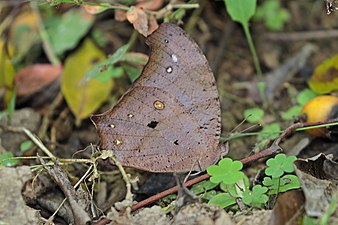
Mycalesis oculus, the red-disc bushbrown, is a satyrine butterfly found in southern India. It is similar in markings to Mycalesis adolphei but distinguished by the reddish band around the large apical spots on the upper forewings.
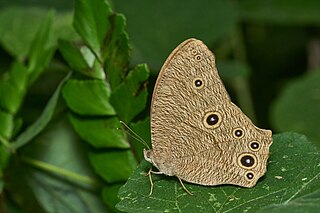
Melanitis leda, the common evening brown, is a common species of butterfly found flying at dusk. The flight of this species is erratic. They are found in Africa, South Asia and South-east Asia extending to parts of Australia.
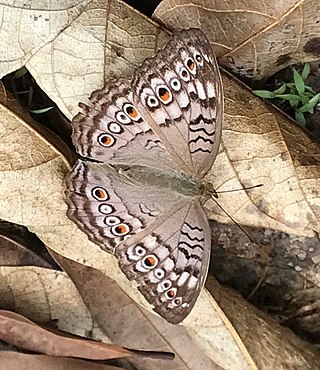
Junonia atlites, the grey pansy, is a species of nymphalid butterfly found in South Asia.

Ixias pyrene, the yellow orange tip, is a small butterfly of the family Pieridae, that is, the yellows and whites, which is found in Sri Lanka, India and southeast Asia.

Appias lalage, the spot puffin, is a small butterfly of the family Pieridae, that is, the yellows and whites, which is found in India, Indochina and Hainan.

Appias indra, the plain puffin, is a small butterfly of the family Pieridae, that is, the yellows and whites, which is found in south and southeast Asia.

Appias libythea, the striped albatross, is a small butterfly of the family Pieridae, that is, the yellows and whites, which is found in south and southeast Asia.

Symbrenthia lilaea, the peninsular jester, is a species of nymphalid butterfly found in South Asia and Southeast Asia. It forms a superspecies with Symbrenthia hippoclus. There are numerous regional forms in a poorly resolved taxonomy.

Melanitis zitenius, the great evening brown, is a species of nymphalid butterfly found in Asia. The species is crepuscular.

Mycalesis subdita, the Tamil bushbrown, is a satyrine butterfly found in south India and Sri Lanka. It is not resolved whether this is a good species or is a subspecies of Mycalesis visala.
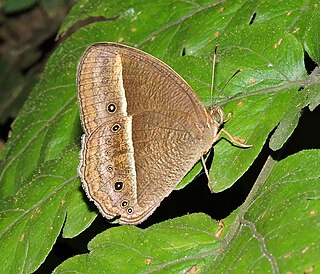
Mycalesis nicotia, the brighteye bushbrown, is a species of satyrine butterfly found in Asia.
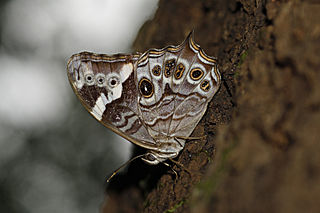
Lethe rohria, the common treebrown, is a species of satyrine butterfly found in Asia.

Vindula erota, the common cruiser, is a species of nymphalid butterfly found in forested areas of tropical South Asia and Southeast Asia.

Cirrochroa thais, also known as the Tamil yeoman, is a species of nymphalid butterfly found in forested areas of tropical Sri Lanka and India. It is the state insect of Tamil Nadu, an Indian state.

Neptis nata, the clear sailer or dirty sailer, is a species of nymphalid butterfly found in south and southeast Asia.

Hippotion celerio, the vine hawk-moth or silver-striped hawk-moth, is a moth of the family Sphingidae. It was described by Carl Linnaeus in his 1758 10th edition of Systema Naturae.

Junonia iphita, the chocolate pansy or chocolate soldier, is a butterfly found in Asia.
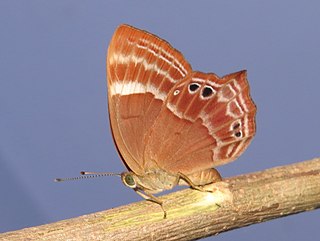
Abisara bifasciata, the double-banded Judy or twospot plum Judy, is a butterfly in the family Riodinidae. It is found in Asia.

Ypthima striata, the Nilgiri jewel fourring or striated fivering, is a species of Satyrinae butterfly found in south India.

Heteropsis davisoni, the Palni bushbrown, is a species of satyrine butterfly found in southern India. Some authors consider this as a subspecies of Heteropsis mamerta or Mycalesis malsara or Mycalesis lepcha.


